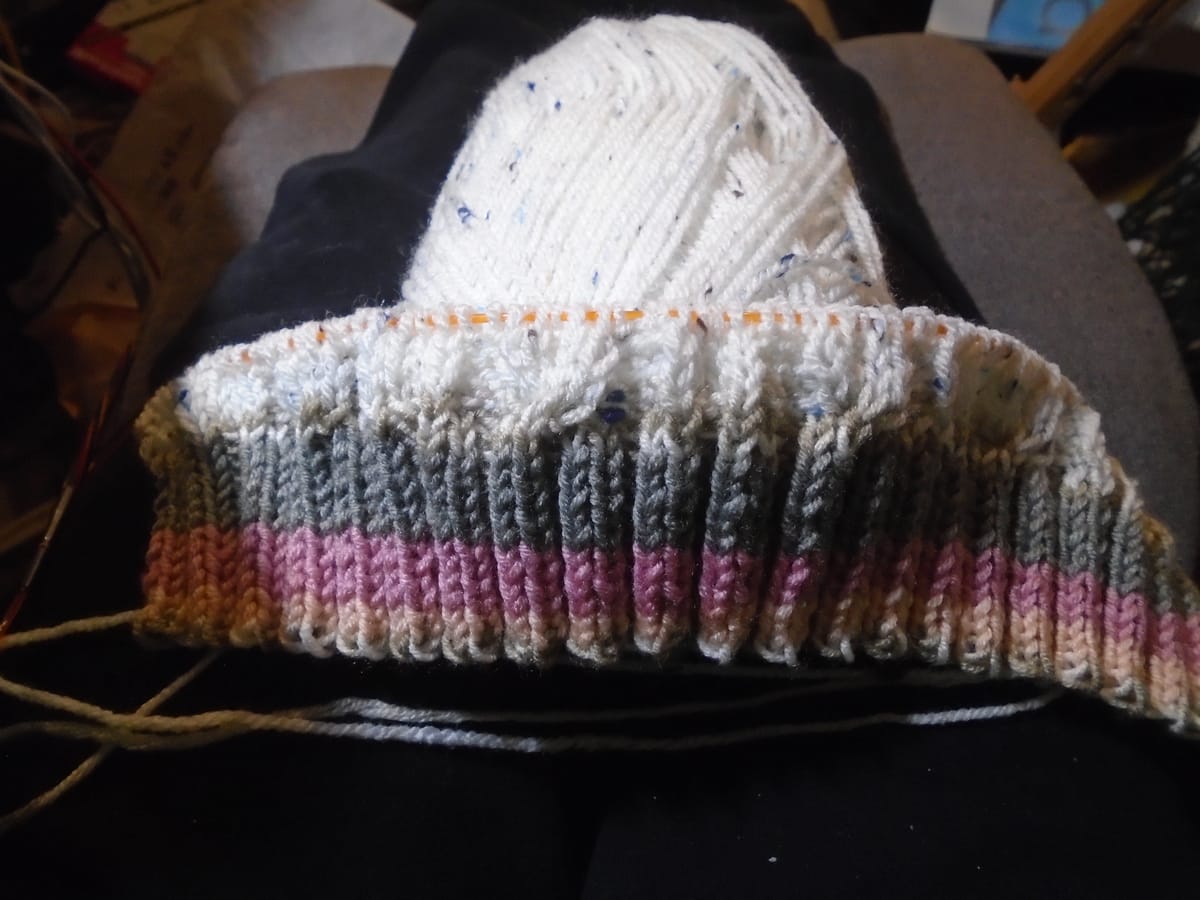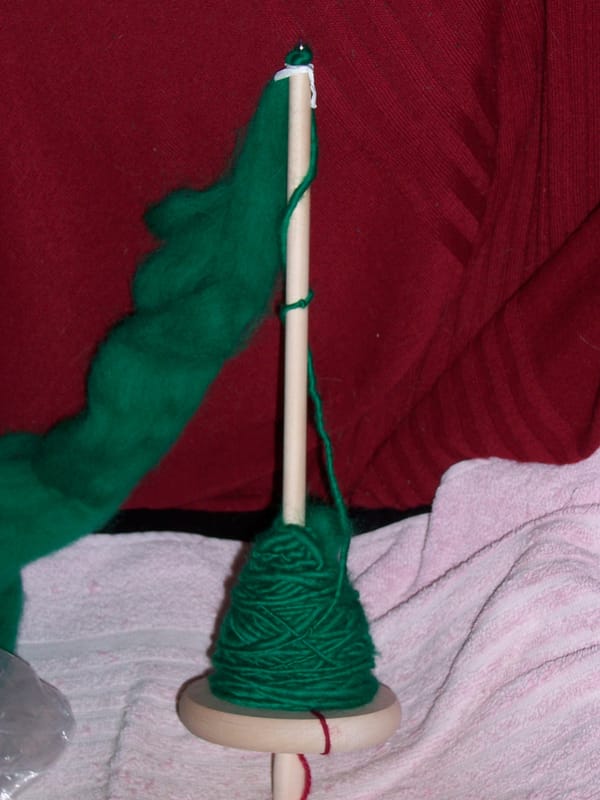Colourless green ideas

I have previously touched on the redemption of acrylic as a knitting yarn, from being that stuff you didn't knit with unless you were too poor to afford anything else to becoming a really good (but still cheap) option. I've also mentioned acrylic-based sock yarn, something else I never thought possible. Stick around, because it gets even better.
You have probably gathered by now that I prefer to be as environmentally friendly as possible. I do not buy my ex-lodger's argument, which is basically "well, China isn't doing anything to curb emissions, and if they aren't it doesn't make any difference what anyone else does, so why should we bother?" All I can say to that is that this is also the man who not only insisted that Donald Trump would be a Good Thing, but that I wasn't to believe anything I heard about him (including anything he was reported as having said or done) because it was All Lies and he was really a very sensible and astute politician. I don't know exactly how he is processing current events in that quarter, because for some mysterious reason he has gone dead silent on the subject.
But, anyway, leaving aside my ex-lodger, I always used to feel a little guilty about using acrylic because I thought all synthetics were basically the same. When you boil it all down, it's just a fancy sort of plastic, right?
Well, yes and no. When you factor everything in, including production processes and so on, acrylic actually comes out more environmentally friendly than quite a lot of natural fibres, most notably cotton, which uses a ridiculous amount of water in production (and, unless it's organic, also more pesticides than any other crop on earth, which is why I try to get organic cotton if at all possible). Acrylic, counter-intuitively, is one of the most environmentally friendly fibres you could use, taken overall, even though new acrylic is made from petrochemicals. And... guess what, it gets better still.
"But," I thought to myself, "at least you can recycle cotton, and indeed most natural fibres. I don't think you can recycle acrylic."
Wrong again. Not only can you recycle acrylic, but I've just knitted a baby hat with it, and you know what? It's a nice yarn. Time alone will tell how it washes and wears, but if it hadn't said "recycled" on the label I really wouldn't have known. I can't tell it from new acrylic fibres, and they've obviously found a way to get rid of every scrap of old dye, because the yarn is perfectly white.
So I investigated, because of course I did, how one went about recycling acrylic; and I found a lot of contradictory information, at first sight. Some sites were saying it was hard to recycle, while others said it was very easy to recycle but in practice it wasn't recycled very often. Distilling all the information down, you know how plastic items often have one of those little recycling logos on them with a number in the middle to designate the type of plastic? Well, acrylic is 7, which just means "other plastics", and that means it gets lumped in with a wide variety of stuff, some of which genuinely is hard to recycle. Acrylic itself, it seems, is not. The problem is not recycling it per se. It's sorting it out from among all the other miscellaneous 7s.
Having said all that, there are recycling companies who do have specific facilities to deal with it, and apparently it is very economical to recycle as you don't have to add any new ingredients. I don't know what things are like round here, specifically; this is East Anglia, so we recycle everything possible because we just don't have enough suitable space for landfill (which is probably just as well), and so I would not be surprised if our kerbside collections could deal with it. Nonetheless, it's not too commonly done, and in fact most acrylic that does get recycled is recycled by the companies who make or process it. Acrylic is not just used to make yarn, but also a hard plastic with properties similar to glass, and offcuts and trimmings get recycled so that they aren't wasted.
So, what about recycled acrylic yarn? Well, I was using Knitcraft Limited Edition DK, which is exclusive to Hobbycraft. There is also Sirdar Loveful; that was the one that turned up the most references on a quick web search, so I imagine it's the best-known brand, but it's not on its own. I also found James C Brett Second Chance, Scheepjes Scrumptious (which also contains recycled polyester from plastic bottles), and Reacryl, which I don't think is available for retail sale as a knitting yarn. I think that one's more for clothing manufacturers. Most of them don't specify whether they come from pre- or post-consumer waste, other than the Loveful, which apparently is made using "waste from the production of virgin acrylic fibres". Credit to them for using that, but I would like to see an acrylic yarn that I knew was definitely from post-consumer waste. At the moment I have to tell people that the acrylic baby things I knit for food bank are not recyclable, so I would prefer it if they were re-used, either by passing them to another baby when outgrown or handing them back to the food bank. But I am very happy that it is, at the very least, possible.
What I'd really like to see is a company doing for acrylic what Rapanui do for cotton. If you have worn-out 100% cotton garments, you can simply go here for instructions on how to send them to Rapanui free of charge (a few exclusions apply; last time I checked they didn't take jeans or underpants, probably in both cases because there's non-cotton content, namely rivets and elastic respectively) to be remade into new clothing or, where that is not possible, responsibly recycled. And when I wore out the cuffs on my beloved oatmeal tweedy aran jumper, which was, of course, knitted by me and therefore acrylic (pretty much all my winter stuff is), I would have really loved to pack that off for recycling instead of sadly dropping it into the bin.
Maybe I'll live to see that, one day. Who knows?




